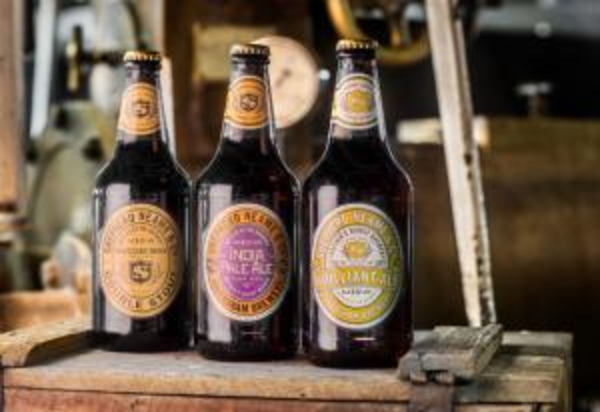Golden Ale: beer style that's a golden oldie
Added: Friday, May 2nd 2014

History has a habit of puncturing received wisdom. As millions of pints of golden ale disappear down parched throats, drinkers will welcome this sparkling and quenching type of beer. Wasn’t it Exmoor Gold, Hop Back Summer Lightning and Kelham Island Pale Rider that were responsible for this invigorating new style in the late 1980s and 1990s?
In fact, golden ales have been around for a tad longer. Would you believe the early 19th century? It was a time of profound change in the brewing industry. Porter and stout had been the dominating styles of the previous century but as the 19th century dawned, with the industrial revolution going full bore, beer began to change out of all recognition.
One key driver of change was the widespread use of coke in the malting process. Coke had been around for a century or two but in small quantities. Once it was made on an industrial scale, brewers and maltsters used coke in preference to wood. The result was pale rather than brown beer.
But – and here comes the received wisdom – pale beer in the 19th century is thought of as the IPAs and pale ales of Burton-on-Trent. In fact, pale beers, often with a deeper pallor than IPA, were brewed at the turn of the 18th and 19th centuries some considerable distance from Burton.
Shepherd Neame of Faversham in the heart of the Kent hop fields is Britain’s oldest brewery, dating from 1698 and it knows a bit about making beer. But some of the old recipes were hidden from view until they were unearthed by brewer Stewart Main and archivist John Owen. The recipes, in heavy, leather-bound ledgers, were written in code. It’s understandable, as a rival brewer, Ridgen’s, had opened across the street from Shepherd Neame and it would have been easy for a disgruntled employee to nip over the road with details of his bosses’ beers.
Following months of painstaking work that rivals the cracking of the Enigma Codes in World War Two, Main and Owen were able to decipher some of the 19th-century recipes. Two beers were launched as part of the brewery’s Classic Collection, Double Stout, first brewed in 1868, and India Pale Ale, which came two years later.
Then came the eye-opener: Brilliant Ale, brewed between 1825 and 1855 (the thre beers are pictured above). The ledgers are not precise on the exact date, but the recipe, when decoded, was clear: it was brewed with just pale malt and East Kent Goldings hops. Further research revealed that Brilliant Ale became one of the brewery’s most popular beers as drinkers turned away from darker ales. You can see why: it’s a delicious drink, straw-coloured, with honeyed malt, orange and lemon fruit and spicy hops on the aroma. Bitter hops build in the mouth and finish, with tart fruit, spicy hops and juicy malt.
Was the brewery influenced by the pale beers being developed in far-away Burton? It’s more likely that Shepherd Neame was aware of the cost benefits of using pale malt rather than darker grains. Pale malt, because it’s gently heated, contains a much higher level of the natural enzymes that convert starch to fermentable sugar during the brewing process. This enabled brewers to use smaller quantities of malt while achieving the required level of alcohol – an important cost consideration.
Shepherd Neame was not alone. Since 1976, the Durden Park Beer Circle – a group of dedicated home brewers – has patiently researched and revived old beer recipes and reproduced them in their booklet Old British Beers and How to Make Them.
The recipes include several beers from the 18th and 19th centuries made with just pale malt. It’s a style with heritage, so enjoy your golden ale this summer: you’re drinking history in a glass.
*Print version: BEER, Summer 2014.






